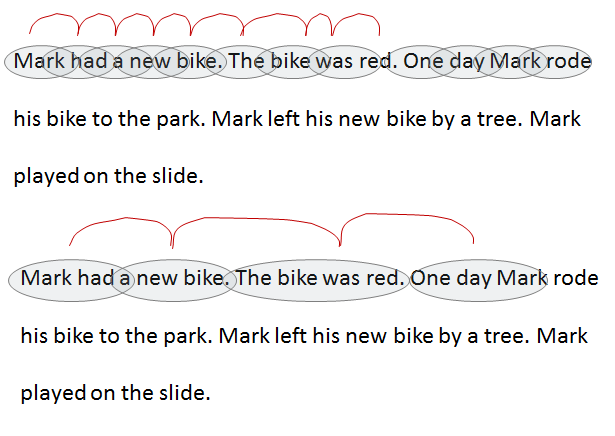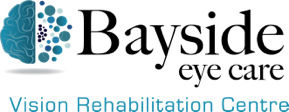20/20 vision refers to how clearly an individual can see, but does not refer to “how” you see. For instance a person can still read the 20/20 row of letters on an acuity chart but may be seeing double or the letters may be going in an out of focus or jumping around. So 20/20 eyesight does not mean good vision. Vision occurs in the visual cortex and throughout the different regions of the brain used for processing visual input to help us interpret the world around us. There are a number visual dysfunctions that can interfere with our vision or “how we see”. These visual dysfunctions usually often go undiagnosed in children because they do not know what they see is incorrect or unusual and can often lead to issues with reading and learning.
What are common visual dysfunctions and how can they affect learning?
Eye Teaming and Binocular Dysfunction
This is an eye coordination problem. Controlling how we aim our eyes keeps us from seeing double. The ability to use both eyes as a single functioning unit requires our brain to fuse the two separate pictures from each eye into a single image. Weakness in eye teaming skills can result in decreased reading speed, fluency and comprehension or avoidance of reading.
Eye Tracking or Oculomotor Dysfunction
This involves difficulty with both eyes working to smoothly and efficiently track a moving object and to look from place to place. Children will have difficulties with reading, such as loss of place, skipping lines, skipping words and lack of fluency and speed.
Normal: Accurate eye movements along a line of print. Smooth return sweeps to the beginning of the next line.

Tracking Deficit: Eyes jump backward and forward and fall on lines above or below during return sweeps.

Convergence Insufficiency
This is a common near binocular vision teaming dysfunction. It results in poor binocular skills at near (meaning using both eyes to see a single object close up) and can make it hard to keep words clear or single on a page while reading

Accommodation Dysfunction
This is a focusing problem. Accommodation is how the eye changes focus from far and near objects; if we consider the eye to be like a camera, accommodation is like the zoom feature of the eye. Difficulties shifting focus from far to near and near to far can be result in difficulties copying notes from a blackboard to a page of paper. It can also result in poor focus at near while reading (inability to sustain a clear image for a prolonged period).
Visual-Motor Integration Dysfunction
This is difficulty with eye-hand coordination. It is challenging to process and reproduce visual images by writing or drawing, involving fine motor movements. Copying from the board becomes difficult and handwriting can be sloppy.
Visual Perception Dysfunctions
Difficulties with visual memory (inability to understand and recall what is seen), visual form perception (discriminate differences in size, shape, or form) and visualization (“seeing” in the mind’s eye) can show up in many forms and can affect the ability to take in and remember information. Poor peripheral vision and / or visual span can lead to poor reading speeds and comprehension.
The wider your visual span the more information you can take in at once and the less eye movements or fixations are required to read. The more efficiently you can read the better the comprehension of the material read is.

These visual dysfunctions can the diagnosed by an optometrist who specialized in developmental-optometry. Routine eye exams are important for testing eyesight and for maintaining ocular health but can often miss visual dysfunctions or disorders. In some cases, glasses will help correct the underlying issues but often more than that is required to help train the visual system to “see” properly. Vision therapy is a tool that is used to correct visual dysfunctions based on the premises of neuroplasticity and the brain’s ability to “re-wire itself”.
What is Vision Therapy?
Vision Therapy is used to teach the eyes to function together as a coordinated team in a rapid, efficient and effortless manner. The systems involved in allowing the eyes to see clear and single images are controlled by various regions in the brain. Vision therapy does not train the strength of the eye muscles, rather the goal is to enhance the performance of the visual pathways in the brain.
Vision therapy programs often use home based therapy (the patient is given a series of exercise to complete at home) with in office therapies done with a vision therapist (1-2 times per week) under the guidance of a developmental optometrist.
Each patient is given a customized treatment plan or vision therapy program and is monitored by the optometrist regularly throughout the course of treatment. Patients that have never seen in 3-dimensions can be taught to achieve this level of vision drastically changing how that perceive and interact with their world. Visual pathways can be altered but once changed can be set for life. Vision therapy is “vision for life” and maintenance programs are often not necessary as it does not train muscles but rather the brain input process and signals to the muscles.
If you or your child struggles with reading, avoids reading, has reduced ability to comprehend the reading material or other issues related to learning you should educate your optometrist or seek out an full binocular vision assessment to determine if there is any underlying vision issues.
Reference: Excellent online sites to reference for more information and training options include www.eyecanlearn.com and www.brainv2.com



